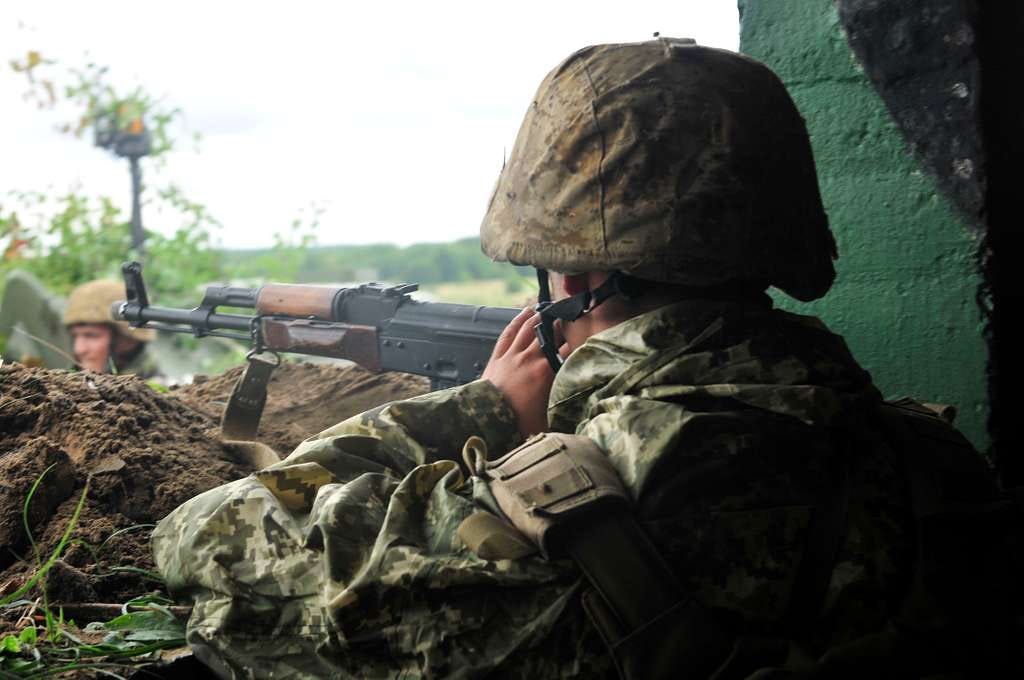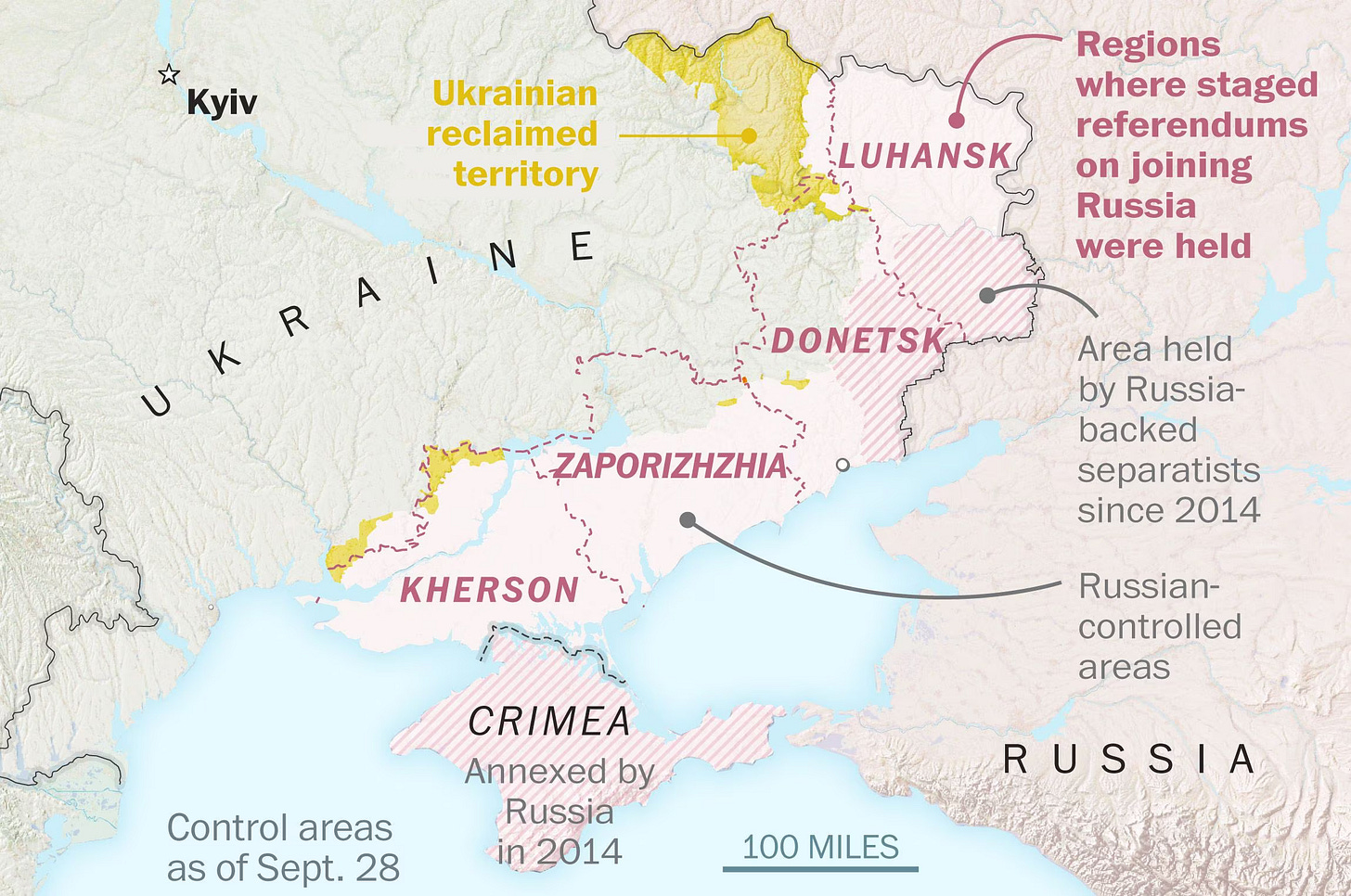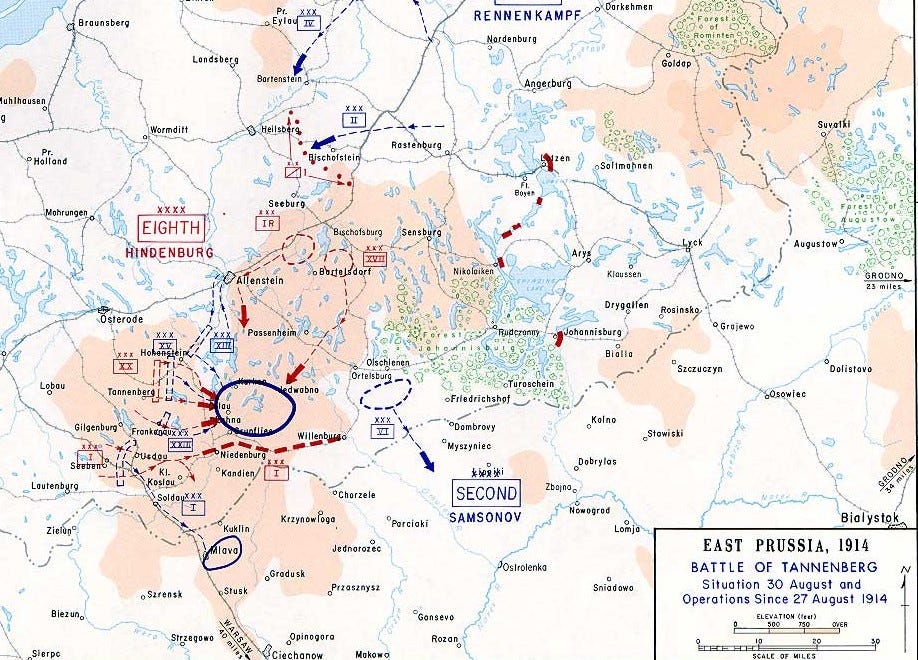Ukraine Should Make Use of the "Superior Form of War"
Why Ukraine Should Adopt a Limited Defensive War to Achieve Total Victory
We can also undertake a limited defensive war, of which there are two distinct kinds. In the first, we aim to keep our territory inviolate and hold it as long as possible, hoping time will change the external situation and relieve the pressure against us. In the second, we adopt the defensive to help create the conditions for a counteroffensive and the pursuit of a positive aim.
-Carl von Clausewitz
Immediate priorities
The decisive factor in the war in Ukraine will be the comparative ability of each side to regenerate its forces. To achieve victory, Ukraine will need to out-regenerate its enemy, a challenge it has so far had difficulty in overcoming, as
argued in his article “Russia’s Adaptation Advantage.” Even in a best case scenario, overall numerical superiority is almost certainly impossible for Ukraine given its demographic disadvantages. However, achieving superiority of forces capable of combined arms operations at the point of decision offers the opportunity to inflict a decisive defeat upon the Russians. That is to say, Ukraine cannot hope for changes in the external situation to rescue it, but must seek to create the conditions for a counteroffensive. To accomplish this, Ukraine needs to create breathing room where it can reorganize before taking the offensive.A successful defense in 2024 offers Ukraine the chance to inflict crippling losses on Russia while regenerating its own forces to be capable of combined arms warfare. The Russians, by having the positive objective, are obliged to attack. What’s more, deficiencies in Russian decision-making make it likely that Russia will attempt an offensive in 2024 regardless of how strong Ukrainian defenses are.
Inducing your enemy to attack a well defended position should not be denigrated as a lower form of war. It does not offer the opportunity to destroy the enemy as an offensive might, or recapture territory, but it does offer the opportunity to inflict sufficient damage so as to create the conditions for future successful offensive operations. As Clausewitz argued, the defensive is the stronger form of war, as demonstrated through the simple proof that it is always assumed by the weaker party. If your enemy is doing you the kindness of assuming the offensive, the immediate strategic objective should be to utilize the inherent advantages of the strategic defensive to maul him. This may include preemptive strikes and operational level attacks. Yet, if the enemy is obliged to do the hard work of attacking, there is every reason to avail oneself of the tactical advantages of the defensive as well, such as fortifications. Ukraine may stand firm and use sophisticated defenses to stop the Russians cold.
Ukraine’s strategy must ultimately be aimed at the Russian center of gravity, which is its armed forces. The possession of territory (Bakhmut, Avdiivka) is only consequential relative to this objective. However, it would be naïve to hope that Russia would throw so much of its force into the attack that Ukraine could inflict sufficient damage to enable the liberation of its occupied territories by merely standing firm. Ukraine needs to inflict the kind of decisive defeat upon the Russians that is only possible through corps and field-army level operations. Ukraine must therefore focus on the goal of regeneration with an aim of maturing its large-scale maneuver capabilities at all costs. For an elastic or “active” defense, Ukraine needs combined arms capabilities that it does not yet possess. A prerequisite to combined arms is extensive training, particularly in coordination. Ukrainian frontline strategy for 2024 should thus be based on buying the time and creating the economy of force needed to rotate personnel into training programs.
This may entail abandoning exposed positions. Even if a position is defensible, if it is possible to retreat to a more favorable position, economy of force must be prioritized. In practice, this may mean the bridgehead at Kyrnky must be evacuated and that when a town such as Avdiivka or Bakhmut is encircled on three sides, or even threatened with it, it should be abandoned without reservation. Preserving Ukrainian combat power is more important than forcing the Russians to storm towns. There must be political will in Ukrainian leadership to bear these losses and confidence that morale will not be degraded by taking actions congruent with military necessity.
Russian Ambitions
Of subordinate importance is determining the immediate strategic objectives of the Russian state. Is its aim to fully occupy Ukraine or merely to occupy certain provinces and then freeze the conflict? Differing political objectives provide different threats and opportunities. If Russia aims to conquer Ukraine, Russian strategy must target the Ukrainian armed forces and seek to break their capacity for resistance. If Russia seeks only to freeze the conflict (whether or not it intends to attempt further conquests at a later date), it may content itself with the easier objective of seizing territory and then assuming the defensive.
The first case is the most militarily challenging for Ukraine. If Russia is committed to the conquest of Ukraine in its entirety, its immediate aim will be to continually wear down Ukraine’s military with its advantage in artillery and personnel until the front collapses from exhaustion. This strategy of maximum pressure would make it extremely difficult for Ukraine to both man the frontline and conduct the large-scale training needed to enable a counteroffensive. To counter it, Ukraine will have to make use of extensive field fortifications as well as broaden its conscription pool. Only with a surplus of manpower can Ukraine afford to conduct the training needed to achieve a breakthrough. Fortifications also afford the opportunity to inflict an attrition gradient so unfavorable upon the Russians that it creates breathing room.
In the second case, the Russians do not need to fully defeat Ukraine’s army. They must only make marginal gains and then establish deterrence. Expanded conscription is still necessary, but use of fortifications can be informed by the territory which Russia intends to conquer. If this is Russia’s policy, Ukraine’s primary challenge will be in obtaining Western aid for breaking the stalemate. If the Russians seek to freeze the frontline, there is significant danger that the West will be amenable to maintaining the status quo, either in the name of stability or because it is not believed to be possible to break the Russian defenses.
Ukraine should not overrate the political value of being seen to attack and be led to attack for purely demonstrative purposes. A strategy of defense and regeneration can form the basis for a corresponding narrative that can maintain Western support. A purely defensive strategy risks feeding the narrative of stalemate and “forever war.” However, taking the offensive for its own sake without realistic hope of success also feeds a narrative of futility. Focusing on regeneration and adaptation creates a counter-narrative of an impending but indefinite decisive offensive for which Western training and equipment is needed.
The Art of the Counteroffensive
Although the concept of defense is parrying a blow and its characteristic feature is awaiting the blow, if we are really waging war, we must return the enemy's blows. . . . Thus a defensive campaign can be fought with offensive battles. . . The defensive form of war is not a simple shield, but a shield made up of well-directed blows.
-Carl von Clausewitz
The defensive form of war should not be reduced to passive resistance and denial. As attacks fail and retreat in disorder, they expose themselves to counterattack and counteroffensive. If they attack into a defense in depth, they may overextend themselves and become vulnerable to attacks on their flanks aimed at encirclement. It should not be forgotten that in WWI while the Schlieffen Plan’s attempt at a large-scale offensive encirclement failed, on the Eastern Front, Hindenburg and Ludendorff achieved a signal victory over the Russians in the defensive Battle of Tannenberg. Capitalizing on the mistakes of the enemy is always easier than enforcing your design on the battlefield. Ukraine may be best served by a primarily static defense at the moment, successful regeneration will allow the exploitation of these opportunities, provided they can be recognized.
The advantages of the attacker in terms of initiative are frequently overstated. The attacker possesses the initiative only at the instant of commitment. From the point that he is committed, the defender through disruptive actions may seize the initiative from the attacker. Merely having a positive purpose is insufficient to possess the initiative. If the operational plan is disrupted, the advantages of the attack in terms of initiative are nullified. The attacker has committed his forces and so lost the element of surprise. The attacker and defender then face one another in a state of flux where professional competency determines the victor. It is in this circumstance that the defender may inflict a Tannenberg upon his enemy. An enemy weakened and disordered by a failed attack may be vulnerable to a counterstroke by a qualitatively superior defender.
In recognition of the power of the defense and the danger of exceeding the point of culmination, if a planned attack is stymied, the effort at that point may be aborted or curtailed. In these more conservative approaches, the defender has fewer opportunities to inflict a crushing defeat upon the attacker, but may nevertheless use the advantages of the defensive to extract a disproportionate toll upon him. Unless the attacker abandons his aim, he must successfully judge at what point the losses of failed attacks have swung the balance of force against him. If he fails and overextends, he is left vulnerable to a counteroffensive that may result in a decisive defeat.
As such, opportunities for such dramatic victories are by no means common. To exploit the errors of the enemy, he first must make them. However, it will suffice to say that it remains easier to achieve such a victory against a failed attack than against a prepared defender. It is inevitable that some Russian attacks will exceed their point of culmination, potentially even on the operational level. Ukraine should seek to identify and exploit these errors through counterattacks and limited counter-offensives against these exhausted and overextended forces. These counterattacks must never be allowed to infringe on the goal of bringing the armed forces of Ukraine to NATO standards as it is only through these reforms that Ukraine will be able to conduct operations on the scale needed to achieve decisive results.
Ukraine must keep this ultimate scenario in mind in its defensive operations while keeping watch for opportunities to punish Russian overextension. Fluid transition from the defensive to the offensive is necessary, particularly on the operational and tactical levels. However, an active defense that can inflict decisive defeats upon the Russians is only possible with substantial reforms and mobilization. Ukraine should use the tactical advantages of the defensive form of war to buy the time needed to create a fighting force that can achieve the kind of victories needed to expel the Russians from Ukrainian soil. Thus, Ukraine should avoid offensive operations for the time being, and make use of fortifications and mobilization to create the reserves needed to conduct large-scale training. Only once it has forces capable of large-scale combined arms warfare can Ukraine attempt to use an active defense to gain the kind of victory necessary to take the offensive against the Russians.






Good article, but concedes (without admitting it) that Ukraine has lost:
1. 'In the second case, the Russians do not need to fully defeat Ukraine’s army. They must only make marginal gains and then establish deterrence'. The Russian army built a barrier the Ukrainian offensive failed to break. The 4 oblasts Putin claimed are all but taken. He can declare peace soon.
2. 'A purely defensive strategy risks feeding the narrative of stalemate and “forever war”'. Ukraine wants its territory back, and a 'strategy of defense and regeneration' will manifestly fail to deliver that. Furthermore, the West is already tiring of this war: the USA has only just approved funds for Ukraine, much of which are not to be shared until the next Presidency! Almost all of the EU's latest funds are for civil and not military purposes. Ukraine has become a failed state: who's going to rebuild it?
Two more considerations weigh heavily:
3. The West is not making let alone supplying enough arms in any form, most acutely artillery shells, for Ukraine to carry on for much longer.
4. Because of this, there is a greater chance now that Putin will threaten to launch a war against NATO to yet further reduce supplies to Ukraine. Article V has never looked more like a piece of paper.
Agree with much of your assessment, except the viability of NATO-style combined arms warfare. Most NATO doctrine will prove about as effective on the battlefield as Moscow's when put to the test. Both NATO and Moscow are too obsessed with the European experience of WW2, officers all determined to be the next Patton.
The failure to breach Moscow's defenses on the Azov front has sent way too many people trained in the NATO paradigm of war down a spiral of trying to figure out how to send divisions and corps into Donbas. Absolutely, let Moscow impale itself on fortifications across the east for the next six months.
But Ukraine has to punch back, and it's the Krynky bridgehead and others like it that offer the best chance for success once Ukraine has Patriot systems, F-16s, and sufficient stocks of long-range weapons. Geography matters. And as any reader of Clausewitz ought to recall, war is politics. Ukraine's strategic task is to inflict unambiguous defeats where it hurts Putin the most - and that means an offensive focus on Crimea throughout 2024. If Ukraine can secure even a beachhead, all of a sudden Putin's power is proven as thin as it truly is.
Why do you think the orcs fear the Krynky bridgehead so much?